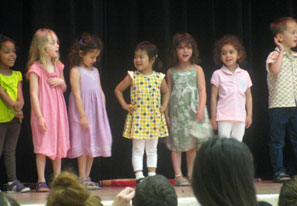
Two New York city council members, Brad Lander and Ritchie Torres, have called for an end to “school segregation” in the city and the elimination of “apartheid schools”—meaning schools in which 90 percent of the students are either black or Latino. Others have defined “apartheid schools” as those with less than 1 percent white enrollment.
The term “apartheid,” of course, refers to the brutal system of legalized racial segregation that existed in South Africa from 1948 to 1994. Its use is meant to convey the sense that an elite minority population wields the whip hand over a racial majority. Most New Yorkers would probably wonder what the city’s Department of Education—not known as a nest of white supremacy—has in common with a programmatic policy of racial classification and restriction. While New York, like America in general, has divisions of income that sometimes cleave along ethno-racial lines, no well-off black or Latino families in New York are prevented from moving into any neighborhood they can afford. Ethnic enclaves in New York are largely determined by group affinity. Chinese immigrants have gravitated toward communities in Lower Manhattan, Brooklyn’s Sunset Park, and Flushing, Queens, but it would be absurd to suggest that Asian-Americans in New York are somehow victims of segregation, along the lines of Jim Crow-era Dixie.
The 90 percent black and Hispanic figure cited by Lander and Torres is striking until one considers that more than two out of three kids (68 percent) in the city’s public school system are black and Latino. It thus takes only a minimal amount of population concentration for a public school to fall into the “apartheid” category—in which, as Lander and Torres see it, poor children are concentrated with one another in schools that consign them to “steep disadvantage.” The council members assert that “the average black or Latino student attends a school where nearly 70% of the students are low-income.” But again, context is needed: according to the Department of Education, 78 percent of all students in the system are poor or attend schools where all students get free lunches. And 90 percent of all city public schools have student bodies that are at least 50 percent poor. So it’s no surprise that black and Latino kids attend primarily lower-income schools.
Nonetheless, council members Lander and Torres say that they have a cure for New York’s “apartheid” problem. They propose an “innovative admissions policy that eliminate[s] the neighborhood zone, accepts students from two demographically-different districts, and prioritizes English Language Learners and students eligible for free-and-reduced-price-lunch for 35% of its seats.” Such a proposal might work in Brooklyn’s District 15, which is racially more diverse than most areas of the city. White students are 27 percent of the district (almost double their citywide average), and Asian students comprise 16 percent of the area (slightly higher than average). Park Slope is an affluent area wedged between Fort Greene and Red Hook, and one could shift kids around the district without causing too much grief. Politically speaking, Park Slope and environs are left of center even by New York City standards, so a project of “busing lite” would probably be acceptable to its residents.
What about other parts of the city? The student population of the Bronx, for instance, is already 90 percent black and Latino. Even the most authoritarian social planner, carefully relocating the borough’s few white and Asian students, would never be able to achieve non-“apartheid” status for more than a few schools, and only then at the expense of others. Or consider Staten Island, whose student body is almost half white, and which accounts on its own for about 20 percent of the school system’s white population. Would the white children of Staten Island’s South Shore have to take buses, ferries, and subways out to remote corners of New York City in order to satisfy Brad Lander’s vision of racial equity?
The logic behind the assertion that most of New York City’s schools are “apartheid schools” is faulty because Gotham is a “majority-minority” city. The school system roughly maps to the same population concentrations that are found throughout the city. It’s no surprise to anyone that the Upper East Side and Greenwich Village are mostly white, that Corona is Latino, and that East New York is mostly black. It’s also no surprise that many white children attend private or religious schools, especially tens of thousands of Orthodox Jews in Brooklyn, thus skewing the demographics of the public school population and making it that much more difficult to achieve an idealized racial balance.
When Lander and Torres ask if the city is satisfied with “separate and unequal” schools, they abuse language in the service of ideology. Arguments can be made about inequitable funding for education at the state level or about funding disparities between urban and suburban schools, but all schools within New York City receive the same level of funding from the Department of Education. Why not forget about engineering the racial makeup of the schools and focus instead on improving performance? The city’s experiment with charter schools has proven that an “apartheid” school can perform as well as a privileged “non-apartheid” school. While council members Lander and Torres fantasize about population transfer, school choice already works.